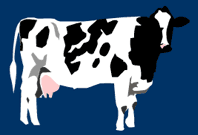
|

|
Making Vaccines
by Rick Groleau
|

|
|
A vaccine against meningococcal disease or any other disease works
by generating an immune response in the body against some kind of
pathogen—a virus, bacterium, or some other agent that causes
the disease. Normally when a pathogen invades the body, the immune
system works to get rid of the pathogen. Often, though, the immune
system gets a slow start, which gives the pathogen time to multiply
and cause trouble. What a vaccine does is expose the immune system
to a less-threatening version of a pathogen and, in effect, prime it
to recognize and quickly eliminate the innocuous pathogen's harmful
counterpart, should it ever invade the body.
This feature lets you create six vaccines in your own virtual
laboratory, using a different technique to produce each one.
 Note
Note

This feature, which was originally produced for NOVA's
Bioterror Web site, does not
discuss the two types of vaccines currently used against
meningococcal disease. One type, called a polysaccharide vaccine,
consists of sugars extracted from meningococcus bacteria. The other
type is a conjugate vaccine (conjugate means "join together"), which
combines the polysaccharide vaccine with a protein. For more
information about meningitis and its vaccines, check out the Centers
for Disease Control's Web site at http://www.cdc.gov.

|

|

Killer Disease homepage

|
|
Flash is a plug-in that allows for increased
interactivity. If you can see the animated boxes at
left, the plugin is already installed. If you do not see
the boxes, you can
install the Flash plugin, or select this feature's
non-Flash version.
|
|
|

